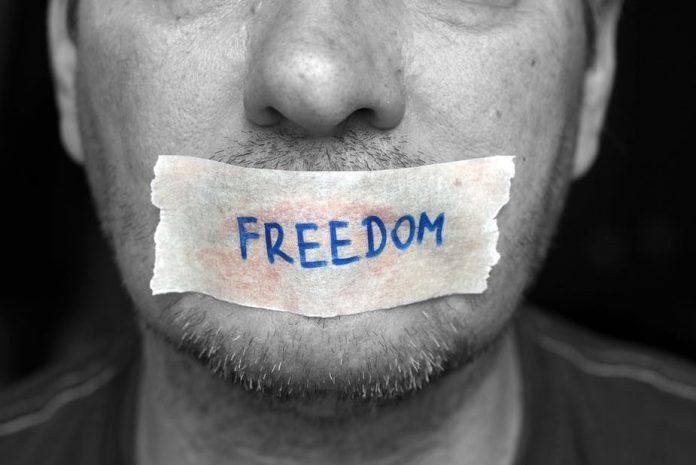This article is written by Anindita Deb, from Symbiosis Law School, NOIDA. This article aims to discuss the controversial stay on one of the IT Rules by the Bombay High Court on grounds that it was infringing free speech.
Table of Contents
Introduction
Article 19(1)(a) of the Indian Constitution guarantees every citizen the right to freedom of speech and expression. It means that everyone has the freedom to openly express their opinions or thoughts through speech, writing, and printing. The liberty to freely speak is seen as the most basic form of liberty. It has a very crucial position in the liberty hierarchy. It is true that the freedom to express one’s mind is the mother of all other freedoms. However, under Article 19(2), this right to freedom of speech and expression is subject to reasonable restrictions for specific purposes.
The right to freedom is a broad concept that encompasses citizens’ rights to freedom of movement, occupation, and assembly, among other things. However, it is argued that one’s right should not obstruct the right of another. Furthermore, everyone has a duty to the state; one should exercise freedom of expression in a way that does not provoke others or encourage violence. Similarly, if the domain of any such right is not confined, it has a consequence. Thus, this freedom is not absolute and is subject to certain limitations. The limitations are in line with national interests.
Stay on IT Rules by the Bombay High Court
Dissent is necessary for a healthy democracy to function. However, the new 2021 Information Technology (Intermediary Guidelines and Code of Ethics for Digital Media) Rules may have a chilling impact on freedom of speech, with a journalist or news publisher having to think twice before criticising the State administration, according to the Bombay High Court.
The Bombay High Court struck a powerful blow for freedom of speech on Saturday, August 14th, by suspending Rules 9(1) and 9(3) of the controversial new IT Rules, 2021, which compelled digital news media to adopt a ‘Code of Ethics’ mandated by the Central Government.
In petitions submitted by legal news portal The Leaflet and journalist Nikhil Wagle, Chief Justice Dipankar Dutta and Justice GS Kulkarni issued an interim order; the Court has not yet issued a final judgement on the constitutionality of the restrictions, and the case will be heard again in September.
The IT Rules 2021 are being challenged in several court cases, including one in the Bombay High Court. Several digital media organisations and journalists around the country have filed petitions claiming that the new rules violate the right to free speech and go beyond the boundaries of their parent legislation.
While interim relief has been granted in some of the other lawsuits, this is the most significant order so far because the Rules have never been stayed by a court. The Centre has often claimed in Supreme Court judgments, including the Sudarshan News hate speech case from late 2020, that it believes the “venomous” internet news medium should be regulated.
The Bombay High Court’s observations suggest that this attempt to provide the government oversight over digital media through the 2021 Rules may fail, given the key mechanism for doing so has been discovered to require entirely new legislation. Any such legislation would most likely be impossible to implement since it would be attempting to establish a censorship regime, which would be difficult to explain as a justifiable restriction on the right to freedom of expression.
Provisions on which the Bombay High Court has placed a stay
Despite the fact that Leaflet and Nikhil Wagle sought the court to stay the operation of several regulations, the High Court only decided to do so for Rules 9(1) and 9(3). The judges determined that the other restrictions were either not yet in effect or were identical to existing rules for restricting content that had not been challenged by the petitioners.
All digital news media publishers are required under Rule 9(1) to “observe and adhere to the Code of Ethics” set by the Central Government in the Appendix to the rules. The Rules provide an ethical code for digital media producers, including:
- News and current affairs content providers and
- Online curated content providers (also known as OTT platforms).
The following existing codes will apply to current affairs:
- The Press Council of India’s Norms of Journalistic Conduct;
- The Cable Television Networks Regulation Act, 1995‘s programme code.
The requirements for OTT platforms include:
- Categorising content into age-appropriate categories as specified,
- Implementing an age verification mechanism for access to adult content, as well as access control measures such as parental controls, and
- Improving content accessibility for disabled people.
To deal with accusations that a digital media publisher has breached the Code of Ethics, Rule 9(3) establishes a three-tier grievance redressal mechanism: the publisher, a self-regulatory body of digital media publishers, and an inter-ministerial committee established by the Centre.
Anyone can file a complaint, and if they are displeased with the response, they can move it up the tiers. This gives the Central Government, through the inter-ministerial committee in tier 3, supervision of overall information produced by digital media houses and enables it to impose sanctions on those who, it believes, have breached the Code of Ethics.
The government does not need judicial intervention or a court order to do this, which raises legitimate concerns about censorship, as the high court would find.
Reason behind the stay on IT rules by the High Court
The new IT Rules are being challenged on the basis that they go beyond the jurisdiction of their parent legislation, the Information Technology Act of 2000 (the IT Act). “The IT Act does not seek to censor content on the internet, except to the extent mentioned in Section 69A thereof,” the Bombay High Court observed. Section 69A of the IT Act allows for the blocking of access to content in the interests of India’s sovereignty and integrity, defence, and public order.
“Adherence and/or observance of moral standards in the code has been raised to the status of a mandatory compliance,” according to the IT Rules. While the programme code’s dos and don’ts were undoubtedly relevant, they were being imposed on digital media in an unsustainable manner.
The government’s inter-ministerial body will be in charge of interpreting the Code of Ethics in the end. The court noted that this meant that the committee might conclude that criticising a public figure violates the Code, even if the criticism did not amount to defamation or any of the other grounds for reasonable speech restrictions under Article 19(2) of the Indian Constitution.
These broad terms employed in the Rules, according to the judges, have a “chilling effect” on digital media since they can be “hauled up for anything if the committee so wishes”. The High Court determined that the IT Act’s power to create rules could not include a provision like this. As a result, “Rule 9 appears to be ultra vires the IT Act’s provisions, as it is beyond the delegated power.”
The judges agreed with the petitioners that Rule 9 should not be in effect while the matter was still being considered in its entirety, stating that this would have a “pernicious effect.” They found that a stay was necessary because it was concluded that making the Code mandatory was a prima facie infringement of the fundamental right to freedom of speech.
Are the IT rules permanently suspended: the path ahead
The Bombay High Court has only given an interim ruling and has not rendered a final verdict on the validity of the IT Rules, as previously claimed. While the preliminary findings seem persuasive, there is no assurance that the final verdict will be the same. Given the arguments cited to demonstrate why Rule 9 is a worry, it seems unlikely that it will survive even if the rest of the provisions are upheld. The amended Rules include several provisions for intermediaries (especially social media corporations) that have not been challenged in court by media organisations or journalists, and thus will not be affected by the Bombay High Court’s final verdict. Of course, it’s possible that the Bombay High Court will be unable to hear the matters going ahead. To avoid multiple orders, the Supreme Court is currently examining a petition to merge all of the individual petitions against the IT Rules around the country into one case before the Supreme Court itself.
Whether the Supreme Court will take up the case or not is yet to be seen in future, but the Bombay High Court’s judgement will protect the fundamental rights of digital news media until further court orders are issued.
Conclusion
One of the foundation stones of a democratic government is freedom of speech and expression. This liberty is viewed as the first prerequisite of liberty because it is required for the correct functioning of the democratic process. It has a privileged position in the hierarchy of liberties, ensuring that all other liberties are protected. It is true to say that it is the mother of all other freedoms. This liberty includes the ability to obtain and disseminate information. It involves the freedom to freely transmit it through available media to as big a population of the country as possible, as well as internationally. While this right is not absolute and is subject to reasonable restrictions, the Bombay High Court found Rule 9 of the IT Rules in excess of the restrictions to be reasonably imposed on media houses. Hence, the judges decided to put a stay on the rule by means of an interim order.
References
- https://prsindia.org/billtrack/the-information-technology-intermediary-guidelines-and-digital-media-ethics-code-rules-2021
- https://www.thequint.com/news/law/why-bombay-hc-stayed-it-rules-digital-media-code-of-ethics-chilling-effect-manifestly-unreasonable#read-more
- https://www.livelaw.in/top-stories/it-rules-2021-manifestly-unreasonablebring-chilling-effect-on-free-speech-bombay-high-court-179590
- https://blog.ipleaders.in/should-freedom-speech-expression-limits/#Conclusion
Students of Lawsikho courses regularly produce writing assignments and work on practical exercises as a part of their coursework and develop themselves in real-life practical skills.
LawSikho has created a telegram group for exchanging legal knowledge, referrals, and various opportunities. You can click on this link and join:
https://t.me/joinchat/J_0YrBa4IBSHdpuTfQO_sA
Follow us on Instagram and subscribe to our YouTube channel for more amazing legal content.
 Serato DJ Crack 2025Serato DJ PRO Crack
Serato DJ Crack 2025Serato DJ PRO Crack











 Allow notifications
Allow notifications



